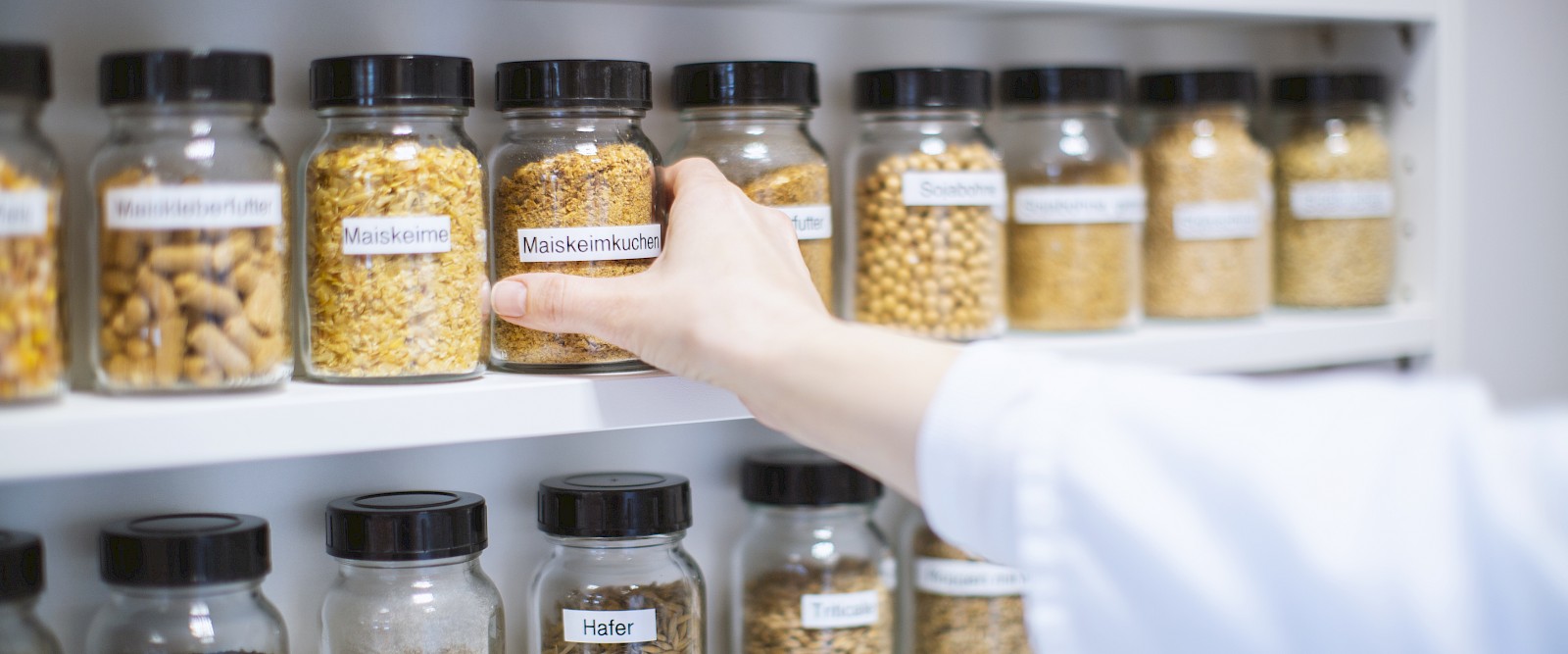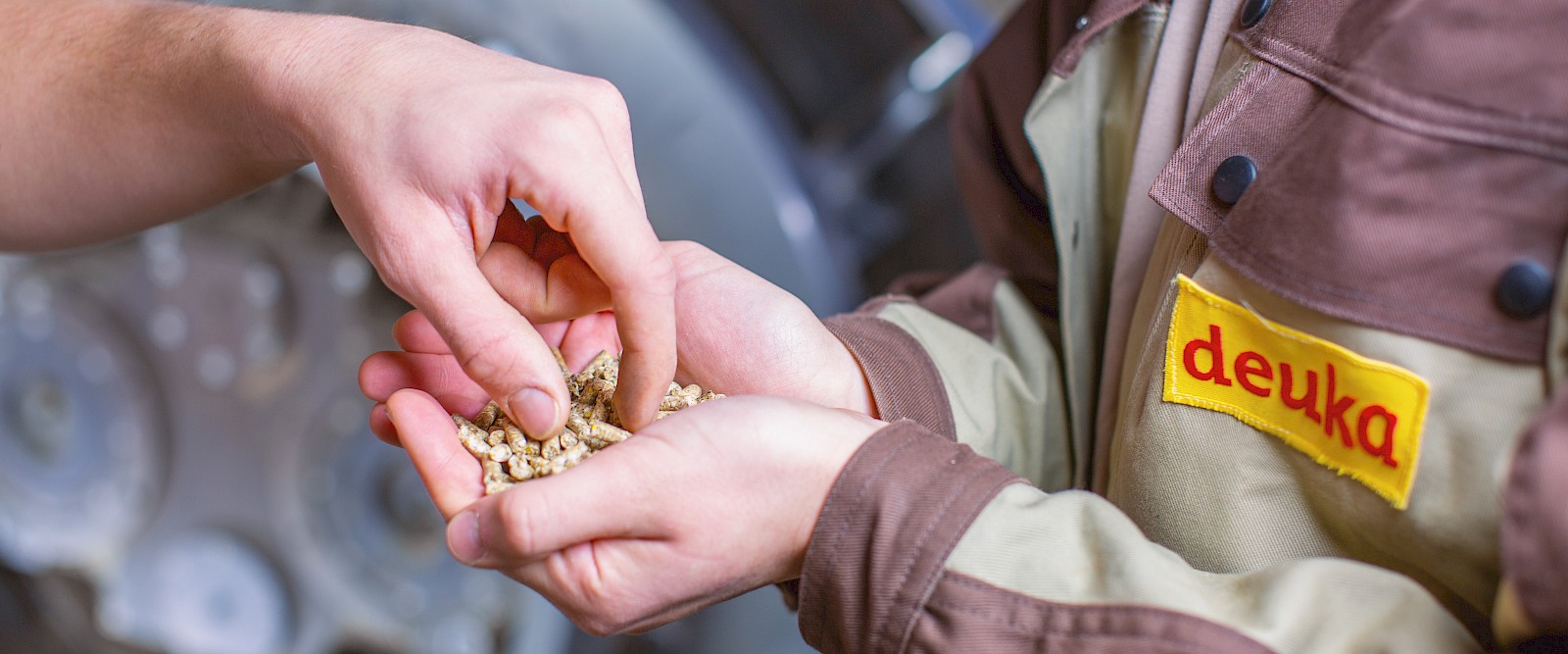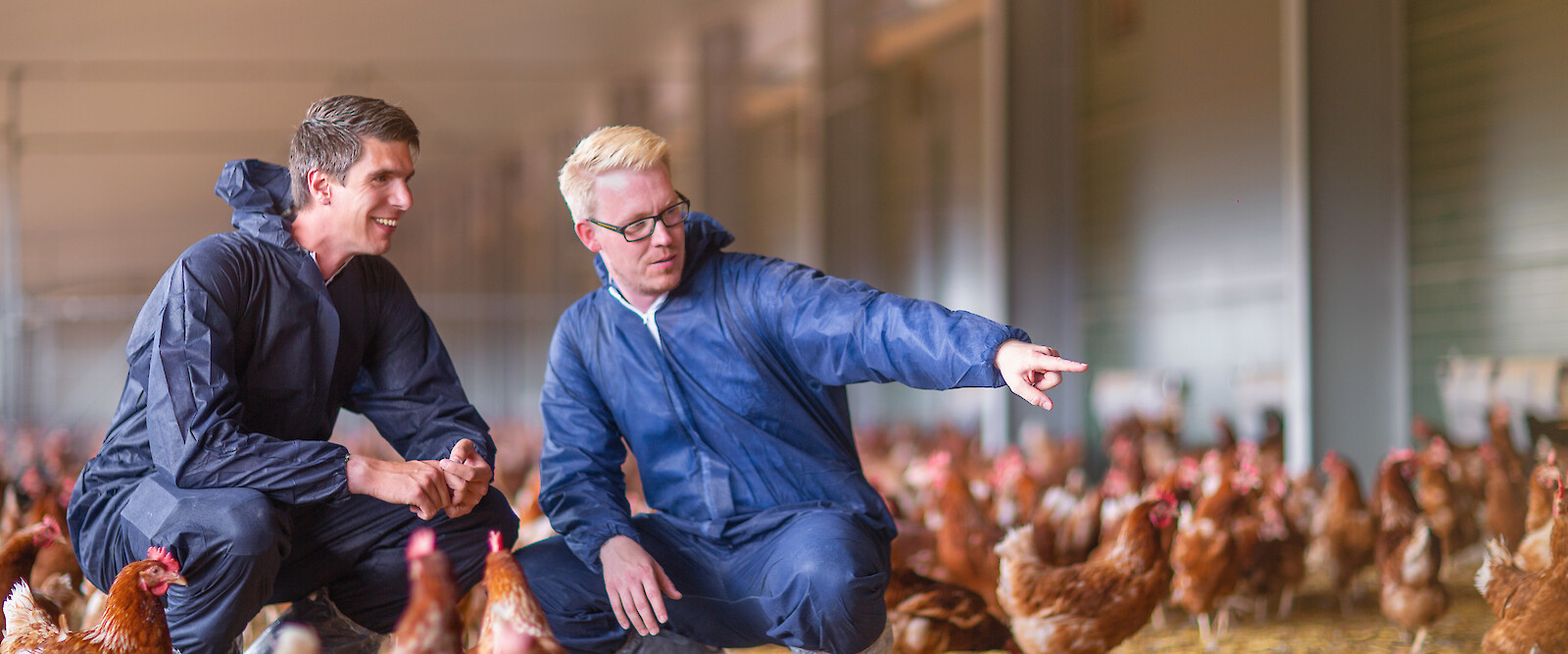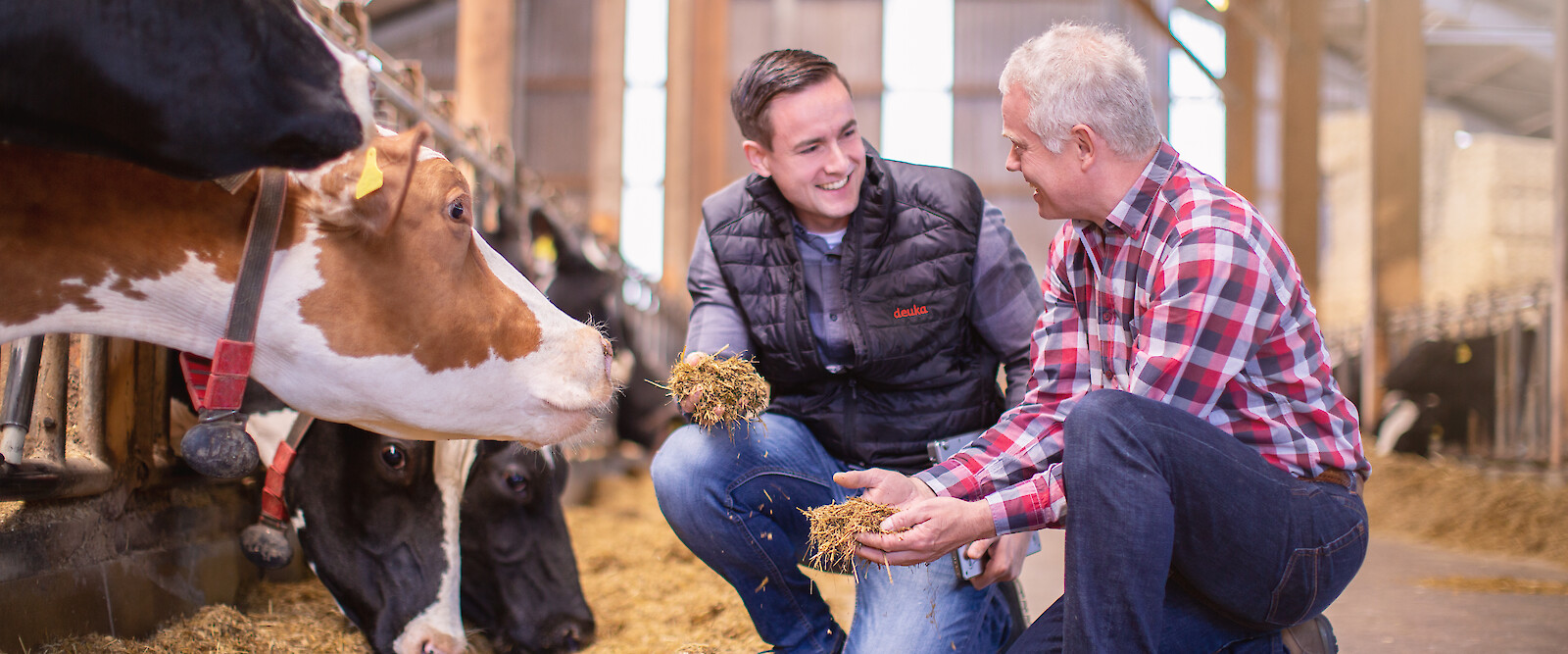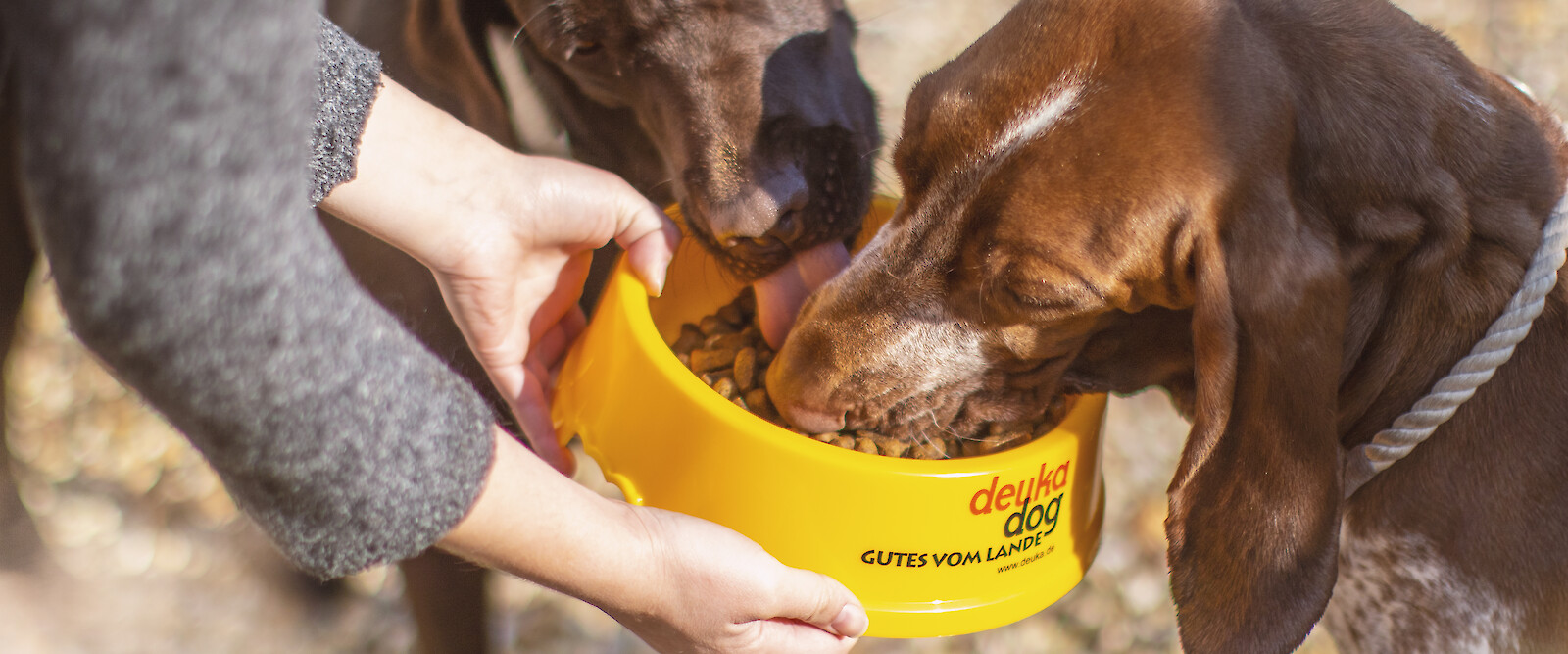Raw material and nutrient lexicon
Weitere Einträge
- Selenium
- Straight feed
- Skimmed milk powder
- Sodium
- Sodium chloride
- Complete feed
- Soy hulls
- Soy protein concentrate
- Soya extraction meal
- Soya oil
- Soybean
- Strength
- Structural value
- Sucrose
- Sugar
- Sugar beet molasses
- Sunflower extraction meal
- Supplementary feed
Soya extraction meal
Soybean extraction meal is a by-product of extracting soybean oil from the soybean for human consumption. The soybean oil is obtained from the bean by extraction. The protein-rich soybean extraction meal remains. The product contains so-called trypsin inhibitors, which hinder the digestibility of the protein in animals. For this reason, soya extraction meal is always subjected to heat treatment (toasting) before it is used in feeding. This breaks down these ingredients and the protein of the toasted meal then has a very high digestibility (e.g. over 84 % for pigs). The crude protein content (between 42 and 48 %) and the content of essential amino acids(lysine, methionine, threonine and tryptophan) are decisive for animal nutrition. The crude protein content depends on the treatment of the soybean before oil extraction. If the bean is hulled beforehand, the meal contains a higher crude protein content and less crude fibre, and vice versa. Soybean extraction meal is used as a highly digestible protein component in compound feed for almost all animal species. The proportion in the feed depends on the requirements of the animal species to be fed and the other components used. The soybean meal can be further refined for feeding to dairy cows by means of another special hydrothermal treatment step. In this process, the protein in the soy meal is modified in such a way that it is protected from degradation by the rumen microbes and is digested enzymatically in the small intestine. This process is also known as the opticon process and has been developed by Deutsche Tiernahrung Cremer.
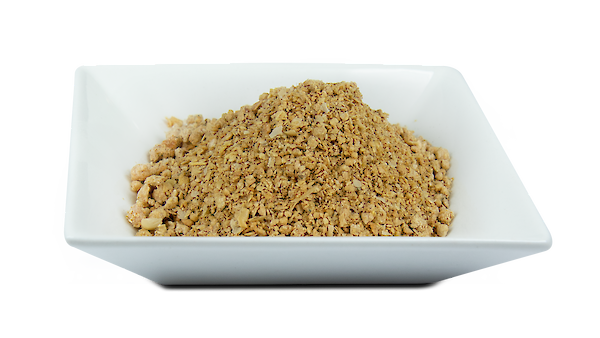
Soya extraction meal |
|
Ingredients |
Content
|
|
Dry matter, g/kg |
870,00 |
|
Crude protein, g/kg |
445,00 |
|
Lysine, g/kg |
27,50 |
|
Methionine, g/kg |
6,30 |
|
Methionine |
12,90 |
|
Threonine, g/kg |
17,30 |
|
Tryptophan, g/kg |
5,70 |
|
UDP, % |
30,00 |
|
nXP, g/kg |
256,00 |
|
RNB, g/kg |
30,00 |
|
Crude fibre, g/kg |
58,00 |
|
Crude fat, g/kg |
13,00 |
|
Sugar, g/kg |
95,00 |
|
Starch, g/kg |
61,00 |
|
Starch content |
10,00 |
|
resistant starch |
6,10 |
|
NDForg, g/kg |
130,00 |
|
ADForg, g/kg |
78,50 |
|
NFC, g/kg |
226,00 |
|
Structural value |
0,18 |
|
Crude ash, g/kg |
59,00 |
|
ME, MJ/kg |
13,35 |
|
ME, MJ/kg |
9,80 |
|
ME, MJ/kg |
12,00 |
|
NEL, MJ/kg |
7,50 |
|
Calcium, g/kg |
3,00 |
|
Phosphorus, g/kg |
6,40 |
|
digestible |
2,25 |
|
Sodium, g/kg |
0,30 |
Sources: DLG feed value tables for pigs; DLG feed value tables for ruminants; Rechenmeister 2000 (Chamber of Agriculture Westphalia-Lippe); CVB Veevoedertabel; DLG Information 2/2001 Structure and carbohydrate supply of the dairy cow

